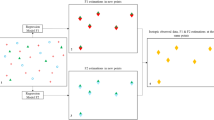
Overview
- Introduces methods of data analysis in geosciences using Python
- Contains a complete collection of computer codes and sample data, as well as an accompanying blog
- Written by an expert for geoscientific modeling programs
Part of the book series: Springer Textbooks in Earth Sciences, Geography and Environment (STEGE)
Access this book
Tax calculation will be finalised at checkout
Other ways to access
About this book
Similar content being viewed by others
Keywords
Table of contents (10 chapters)
Authors and Affiliations
About the author
Bibliographic Information
Book Title: Python Recipes for Earth Sciences
Authors: Martin H. Trauth
Series Title: Springer Textbooks in Earth Sciences, Geography and Environment
DOI: https://doi.org/10.1007/978-3-031-07719-7
Publisher: Springer Cham
eBook Packages: Earth and Environmental Science, Earth and Environmental Science (R0)
Copyright Information: The Editor(s) (if applicable) and The Author(s), under exclusive license to Springer Nature Switzerland AG 2022
Hardcover ISBN: 978-3-031-07718-0Published: 30 September 2022
Softcover ISBN: 978-3-031-07721-0Published: 02 October 2023
eBook ISBN: 978-3-031-07719-7Published: 28 September 2022
Series ISSN: 2510-1307
Series E-ISSN: 2510-1315
Edition Number: 1
Number of Pages: XII, 453
Number of Illustrations: 90 b/w illustrations, 110 illustrations in colour
Topics: Earth Sciences, general, Geophysics/Geodesy, Computer Applications, Geography, general



